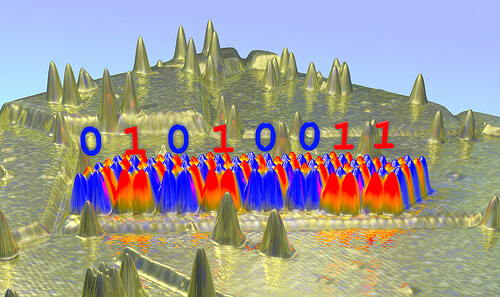The researchers at IBM presented for the first time the possibility of changing the conduction properties of metal oxides, between an insulating state and a conducting state - through the addition or removal of oxygen ions, which act by inducing electric fields at the interface with liquid oxide

Scientists at IBM's research laboratories recorded a breakthrough in the field of materials engineering at the atomic level, which may pave the way for the development of a new type of memory chips and logic chips, with significantly lower energy consumption than the silicon-based chips we are familiar with. Instead of using an electric current, which currently powers these semiconductors, the scientists at IBM discovered a new way to operate chips using tiny ion charges: the addition or removal of ions at the atomic level. IBM's development was revealed in the new issue of the scientific journal Science.
The computers we know today are based on semiconductors produced in CMOS processes. After for years the industry was able to double performance every two years and halve the dimensions and costs required for a given processing load, current production processes are rapidly approaching the performance limits dictated by the laws of physics. New solutions may be required already in the near future, in order to provide high performance with low current consumption.
The researchers at IBM presented for the first time the possibility of changing the conduction properties of metal oxides, between an insulating state and a conducting state - through the addition or removal of oxygen ions, which act by inducing electric fields at the interface with liquid oxide. When the oxide material, which is insulating by nature, undergoes a change to the state of a conductor, it maintains its metallic state even after the electric current is turned off. This constant characteristic means that chips based on this innovative principle can store and transfer data in a more efficient format, instead of internal memory components that are known today and require maintaining a constant current.
The ability to understand the material and control it on an atomic scale, makes it possible to design new materials and components that operate on the basis of completely different principles than those of the silicon-based technology we are familiar with today. The transition from components based on electric current to those that operate on the basis of charges of electric ions for the purpose of controlling the nature of the material, presents a potential for the development of new types of mobile devices. Using such components in combination with an innovative architecture of chips in a three-dimensional structure, may remove the fear of technological barriers that would prevent the development of the industry.
In order to present their breakthrough, the IBM researchers covered an insulating oxide material - vanadium dioxide - with an electrolytic liquid charged with positive ions. The process converted the insulating material into a conductive metallic state. The material maintained this state until it was exposed to another electrolytic solution charged with negative ions, converting it back to its isolated state.
For many years, scientists have been looking for such materials, which can go from a conducting state to an insulating state and back again. Contrary to the assumptions that prevailed until now, the research at IBM discovered that the injection and removal of oxygen into the metallic oxide is responsible for the changes in the state of the material, when exposed to high-intensity electric fields.
A transition from a conducting state to an insulating state was also achieved in the past through changes in temperature or the application of external pressure, in processes that cannot be applied practically in the world of electronic components.

2 תגובות
Link http://www.technologyreview.com/news/512721/why-ibm-made-a-liquid-transistor/
Can you give a link to the article?
I couldn't find it.